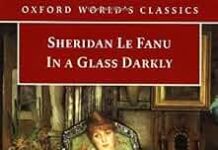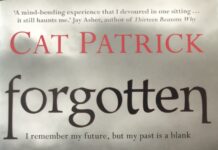In the swirling shadows were morality blurs and human flaws intertwine, The Devil All the Time emerges as a haunting narrative that invites readers too explore the darker corners of the human experience. Unraveling Darkness: A thoughtful Look at The Devil All the Time delves into this complex tapestry, examining the novelS intricate characters and unsettling themes with a measured eye.This review aims to shed light on the evocative storytelling and the profound questions it raises, offering a balanced perspective on a work that challenges as much as it captivates.
Exploring the Interwoven Stories That Build the Haunting World of The Devil All the Time
Delving into the Complex Characters and Their Moral Ambiguities Within the Novel
Within The Devil All the Time, the characters are far from traditional heroes or villains; they exist in the murky middle ground, where motivations are tangled and morality is perpetually in flux. Characters such as Arvin Russell grapple with innocence tainted by harsh realities, while figures like Reverend Preston Teagardin embody both charisma and malevolence in equal measure. This intricate layering forces readers to confront uncomfortable questions about human nature, complicity, and the capacity for darkness hiding beneath seemingly ordinary facades.
The moral ambiguity is artfully reflected through the characters’ actions, which oscillate between moments of compassion and cruelty. Consider the following traits that recur across several figures:
- Contradictory impulses: Concurrently seeking redemption yet succumbing to sin.
- Familial loyalty tangled with violence: Devotion that breeds destruction.
- Faith twisted into manipulation: Belief wielded as both shield and weapon.
| Character | Primary Motivation | Moral Conflict |
|---|---|---|
| Arvin Russell | Protecting family | Violence vs. innocence |
| Reverend Preston | Power through faith | Charisma vs. corruption |
| Lenora Laferty | Desire for love | Hope vs. despair |
Analyzing the Novel’s Dark themes of faith, Violence, and redemption with Nuanced Depth
The Devil All the Time intricately weaves a tapestry of dark human experiences, skillfully exploring the fragile boundaries between faith, violence, and redemption. The narrative challenges readers to confront unsettling realities where religion becomes both a refuge and a weapon,shaping characters who oscillate between sin and salvation. The spiritual fervor depicted is not merely a backdrop but a complex force that drives people to justify heinous acts in the name of righteousness, blurring the line between divine purpose and moral ambiguity. This duality invites a reflection on how deeply belief systems can entangle with human frailty, leading to profound crises of conscience.
- Faith as a double-edged sword: Source of hope and paranoia
- Violence beyond mere physicality: Exploring psychological and emotional scars
- Redemption in fragmented forms: Imperfect paths and painful reckonings
To further grasp the novel’s interwoven themes, a comparative lens unveils how the characters’ journeys reflect broader societal tensions. The constant collision between innocence and depravity is mirrored in their quests for meaning amidst chaos. below is a simplified analysis that captures essential character arcs and corresponding themes:
| Character | Dominant Theme | Symbolic Insight |
|---|---|---|
| Arvin | Redemption | The struggle to overcome inherited darkness |
| Preacher Teagardin | Faith | Religious fanaticism masking corruption |
| Willard | Violence | Despair driving cruelty and destruction |
The Role of Setting in Crafting an Atmosphere That Enhances the Story’s Unease and Tension
The use of setting here also taps into a symbolic register, where the physical decay mirrors the moral rot festering within the community. The film’s palette-muted earth tones interspersed with sudden splashes of crimson-reinforces this duality between quiet desolation and brutal chaos. Consider this simple comparison:
| Setting Element | Atmospheric Effect |
|---|---|
| Overgrown forests | Mystery and Entrapment |
| Abandoned Churches | Corruption and Hypocrisy |
| Cracked Roads | Decay and Ruin |
These elements together weave a tapestry of unease, making the environment itself a character that amplifies the story’s tension. the audience is not just observing the characters’ downward spirals-they are immersed in a world where every corner feels laden with dread, every shadow a potential threat, and every silence an ominous pause before the next harrowing revelation.
How symbolism and Imagery Elevate the Narrative Beyond Conventional Crime fiction
The Devil All the Time transcends typical crime fiction by weaving a rich tapestry of symbolism and imagery that deepens the emotional resonance of its narrative. Darkness is not merely a backdrop but a living, breathing entity manifesting through recurring motifs such as twisted trees, broken crosses, and decaying landscapes. These elements embody the corrupting influence of evil and the fragility of human morality.Through such vivid symbols, the story invites readers to explore the blurred lines between innocence and sin, creating an atmosphere charged with foreboding and introspection.
Imagery in the story extends beyond evoking mood-it acts as a mirror reflecting the characters’ inner turmoil and fractured psyches. Moments of brutal violence are often juxtaposed with hauntingly serene natural scenes, symbolizing the coexistence of beauty and brutality. The following table highlights some of the key symbols used and their layered meanings:
| Symbol | Visual Imagery | Underlying Meaning |
|---|---|---|
| Twisted Trees | Gnarled branches against a stormy sky | Distorted morality and entrapment |
| Broken Crosses | Shattered religious icons | Crisis of faith and corrupted hope |
| Deserted Roads | Empty highways fading into fog | Journey into the unknown and isolation |
- Symbolism enriches character motivations and the overall mood.
- Imagery acts as a conduit for emotional and psychological depth.
- The fusion of both elements elevates the narrative to a meditative experience.
Examining Pivotal Plot Twists That Challenge Readers’ Expectations and Emotional Responses
The film punctuates its narrative with jolts that ripple through the viewer’s psyche, often achieved through:
- Unexpected betrayals that shift alliances and motivations
- Sudden character demises that thwart anticipated story arcs
- Revelations of hidden pasts that recast previously understood events
| Plot Element | Expected Outcome | Actual Twist | Emotional impact |
|---|---|---|---|
| Father’s Moral Decline | Redemption through faith | Descent into murder and madness | Shock and unease |
| Protagonist’s Revenge | Restorative justice | Cycle of violence continues | Hopelessness |
| Religious Zealotry | spiritual salvation | Manipulation and fanaticism | Dread and skepticism |
The Impact of the Author’s Narrative Style on Pacing and Reader Engagement Throughout the Book
Delving deep into the labyrinthine world of the narrative, the author employs a fragmented, multi-perspective style that crafts an almost cinematic rhythm. This approach shuffles timelines and viewpoints, creating a mosaic that challenges the reader to piece together the sinister puzzle. The Devil All the Time cleverly uses this disjointed narrative to manipulate pacing-moments of intense, harrowing action are juxtaposed with quieter, reflective passages that linger just long enough to heighten tension. This ebb and flow mirrors the unpredictability of the characters’ lives,pulling readers into a breathless dance of anticipation and introspection.
What truly sets the story’s pace apart is not just the shifting perspectives but the subtle use of repetition and symbolism, which anchor the reader amid the swirling narrative currents. Consider the table below,which outlines how these elements appear intermittently yet substantially across key chapters,reinforcing motifs without ever feeling overbearing:
| Chapter | Recurring Motif | Effect on Reader |
|---|---|---|
| 3 | Religious Imagery | Invokes discomfort and moral ambiguity |
| 7 | Gun Symbolism | Builds tension,foreshadows violence |
| 12 | Loneliness & Isolation | Deepens emotional connection |
- Shifting viewpoints create a mosaic-like narrative texture.
- Uneven pacing mirrors the chaos and unpredictability of the characters’ worlds.
- Symbolism and repetition guide emotional responses and maintain engagement without overwhelming the reader.
Thoughtful Reflections on The Devil All the Time’s exploration of Human Frailty and Resilience
Beneath the haunting narrative and gritty atmosphere lies a profound meditation on the complex dance between vulnerability and strength within human nature. The characters, etched with raw imperfection, embody how fragility can both shatter and forge resilience. Moments of tenderness emerge unexpectedly amid darkness, reminding us that even in the bleakest landscapes of despair, the human spirit’s capacity for endurance sparks quietly but persistently. This interplay invites readers to confront uncomfortable truths about suffering, choice, and redemption without offering simple resolutions-rather, it echoes life’s ambiguity and the multifaceted layers of our emotional existence.
The story’s portrayal of human frailty is not mere vulnerability but a dynamic force that coexists with courage and defiance. Each character’s journey reveals how resilience is often born not from triumph but from grappling with pain,loss,and moral ambiguity. The narrative highlights key themes such as:
- The cyclical nature of trauma passed through generations
- The blurred lines between good intentions and destructive actions
- The quiet strength found in endurance rather than victory
| Aspect | Human Frailty | Resilience |
|---|---|---|
| Nature | Susceptibility to harm | Capacity to recover |
| Expression | Fear, doubt, weakness | Hope, determination, endurance |
| Impact | Breakdown, despair | Growth, transformation |
These contrasts underscore the tension at the story’s core, crafting a narrative that feels both painfully honest and quietly affirming.
Why This Novel Appeals to Readers Seeking a Gritty Yet Philosophical Literary Experience
The Devil All the Time masterfully intertwines raw, unfiltered portrayals of human suffering with deep existential inquiries that prompt readers to question the nature of good, evil, and redemption. The novel’s setting, steeped in the grim realities of post-war rural America, is more than mere backdrop; it becomes a crucible where characters wrestle with their demons-both internal and external.This dual focus on visceral storytelling and philosophical depth creates a gripping narrative that appeals to those craving literature that challenges as much as it entertains.
What sets this novel apart is the way it balances its gritty atmosphere with profound thematic explorations. Readers encounter a cast of morally complex characters whose actions ignite reflections on faith, fate, and free will. This dynamic is captured in the following breakdown, highlighting the novel’s key elements that resonate deeply with its audience:
| Element | Impact |
|---|---|
| Dark, atmospheric setting | Immerses readers in a world where shadows conceal larger philosophical questions |
| Complex character motivations | drives exploration of moral ambiguity and human nature |
| Underlying spiritual themes | Encourages reflection on faith’s role amid suffering and violence |
| Nonlinear storytelling | Enhances the layered understanding of cause, effect, and destiny |
- Emotional intensity: heightens the philosophical impact by making abstract themes tangible
- Unflinching honesty: ensures the narrative remains authentic and thought-provoking
- Evocative prose: calls attention to life’s paradoxes through vivid imagery
Specific recommendations for Readers Interested in Psychological and Southern gothic Fiction
For those drawn to the labyrinthine depths of the human psyche intertwined with the eerie ambience of Southern Gothic storytelling, The Devil All the Time presents an ideal narrative terrain. The novel’s stark portrayal of flawed, haunted characters navigating moral ambiguity invites readers to explore themes of sin, redemption, and the shadows lurking beneath small-town Americana. Fans of psychological fiction will appreciate how the story delves into trauma’s long-lasting grip, revealing how personal demons intertwine with broader societal decay. Simultaneously occurring, the Southern Gothic elements – decaying settings, religious fanaticism, and grotesque eccentricities - enrich a textured atmosphere that both unsettles and captivates.
Key aspects to appreciate include:
- Multilayered characters: complex individuals whose inner turmoil drives the narrative forward.
- Atmospheric tension: A slow-building dread that permeates through evocative settings and subtle dread.
- Themes of fate and violence: Exploring how inherited darkness shapes destinies in inescapable ways.
- Religious symbolism: A nuanced use of faith as both refuge and source of cruelty.
| Element | Psychological Fiction | southern Gothic |
|---|---|---|
| Focus | Inner conflict & mental states | Decay & grotesque rural settings |
| Character Types | Traumatized, conflicted | Flawed, eccentric, often outcast |
| Atmosphere | Claustrophobic, tense | Dark, eerie, foreboding |
| Themes | Identity, morality, trauma | Religion, violence, isolation |
the Devil All the Time as a bridge Between Literary Merit and Cinematic Adaptation Potential
Crucial to its adaptation potential is the novel’s structure, which lends itself to multi-perspective storytelling, a device often celebrated in modern cinema. The fragmented narrative allows for:
- Distinct character arcs that can be fleshed out independently
- Varied tonal shifts that maintain viewer engagement
- A dynamic interplay between light and shadow, both thematically and visually
Below is a comparison highlighting key elements that bridge the novel’s literary depth with its adaptability on screen:
| Literary Element | Cinematic Equivalent | Impact |
|---|---|---|
| Atmospheric Descriptions | Visual Cinematography | Sets mood, immerses audience |
| Internal Monologues | Expressive Performances & Voiceovers | Conveys character psyche |
| Non-linear Narrative | Fragmented Editing | Maintains intrigue, layered storytelling |
| thematic Complexity | Symbolism & Sound Design | Deepens emotional resonance |
understanding Donald Ray Pollock’s Unique Voice and Its Contribution to Contemporary American Literature
Donald Ray Pollock’s narrative style is marked by its raw intensity and unflinching portrayal of the darker facets of human nature. His voice cuts through the sanitized veneer of contemporary storytelling with a gravelly, haunting timbre that lingers long after the last page is turned. Pollock’s ability to weave intricate, flawed characters into bleak yet compelling settings challenges readers to confront uncomfortable truths about morality, violence, and redemption. His prose is succinct but charged with emotional weight, often employing a minimalist approach that amplifies the impact of each word and gesture.
What sets Pollock apart in American literature is his fearless exploration of the intersections between faith, despair, and survival within rural, often forgotten landscapes. His characters,frequently tormented by internal and external demons,navigate a world where hope and brutality coexist in precarious balance. Below is a brief look at the key traits defining his voice and their contributions to modern storytelling:
- Unvarnished Realism: Presents life’s gritty realities without dilution.
- Complex Morality: Avoids clear heroes or villains,opting for morally ambiguous figures.
- Economy of Language: Uses concise prose to create a mood of tension and inevitability.
- Southern Gothic Influences: Infuses stories with haunting atmospheres typical of the genre.
- Exploration of Religion: Critiques and questions faith amidst human suffering.
*Unraveling Darkness: A Thoughtful Look at* the Devil All the Time invites readers to peer into the tangled webs of human nature and morality without easy answers. It navigates the shadows of flawed characters and haunting choices with a measured eye, encouraging reflection rather than judgment. Whether you find solace or discomfort within its pages, this insightful exploration leaves an indelible impression-a reminder that sometimes, the most profound stories are those that dwell in the murky spaces between light and dark.















